The best cinematographers in film history have shaped the way we experience movies, creating visual masterpieces that resonate with audiences long after the credits roll. Cinematography, the art and science of motion-picture photography, is a cornerstone of filmmaking. It encompasses everything from camera and lens selection to lighting, framing, and color grading. The role of a cinematographer, or Director of Photography (DP), has evolved significantly since cinema’s inception in 1895 with Auguste and Louis Lumière, adapting to technological advancements from the early days of black and white film to today’s digital era. This article explores 20 cinematographers who have made exceptional contributions to this field, shaping the visual language of cinema across different periods.
Our list spans from pioneering figures like Gregg Toland, whose deep-focus work on “Citizen Kane” revolutionized the craft, to contemporary masters such as Roger Deakins, renowned for his stunning work on films like “Blade Runner 2049.” We’ll examine the distinctive styles and technical innovations of cinematographers like Vittorio Storaro, celebrated for his use of color in “Apocalypse Now,” and Emmanuel Lubezki, known for his long takes and natural lighting in “The Revenant.” Through these 20 profiles, we’ll examine how the best cinematographers have consistently pushed the boundaries of their art, creating unforgettable visual experiences that continue to influence filmmakers and captivate audiences worldwide.
Table of Contents
1. Roger Deakins: Master of Natural Light
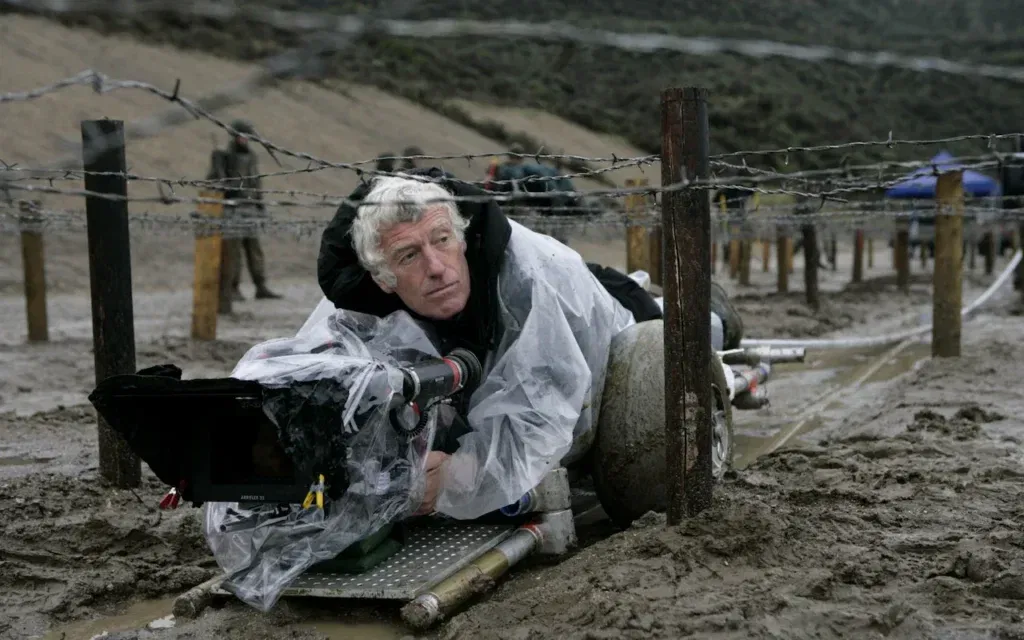
Roger Deakins is a Britains best cinematographers who has been active since the 1970s. He is known for his naturalistic style and ability to create distinct visual atmospheres for each project.
Deakins is renowned for his masterful use of natural light, subtle camera movements, and meticulous composition. He often employs long takes and creates immersive visual experiences that serve the story rather than draw attention to themselves.
Deakins has a long-standing collaboration with the Coen brothers, working on films like “Fargo,” “No Country for Old Men,” and “The Big Lebowski.” Other notable works include “Blade Runner 2049” with Denis Villeneuve and “1917” with Sam Mendes.
Deakins is known for his innovative use of digital cinematography, being one of the first major cinematographers to fully embrace digital cameras. He also developed unique lighting techniques for “Blade Runner 2049” to create its distinctive futuristic look.
Deakins has received 15 Academy Award nominations for Best Cinematography, winning twice for “Blade Runner 2049” (2017) and “1917” (2019). He has also been honoured with five BAFTA Awards and a Lifetime Achievement Award from the American Society of Cinematographers.
2. Emmanuel Lubezki: The Long Take Virtuoso

Emmanuel Lubezki, also known as “Chivo,” is one of Mexico’s best cinematographers who has been active since the 1980s. He is known for his innovative techniques and fluid, naturalistic style.
Lubezki is famous for his use of natural lighting, long takes, and fluid camera movements. He often employs wide-angle lenses and a floating camera technique to create immersive, dream-like sequences.
Lubezki has collaborated extensively with directors Alfonso Cuarón (“Children of Men,” “Gravity”) and Alejandro González Iñárritu (“Birdman,” “The Revenant”). He also worked with Terrence Malick on “The Tree of Life” and “The New World.”
Lubezki pioneered the use of continuous long takes in films like “Children of Men” and “Birdman.” For “Gravity,” he developed innovative lighting techniques to simulate the unique conditions of space.
Lubezki has won three consecutive Academy Awards for Best Cinematography for “Gravity” (2013), “Birdman” (2014), and “The Revenant” (2015), a feat unprecedented in the history of the award.
3. Vittorio Storaro: Painter with Light
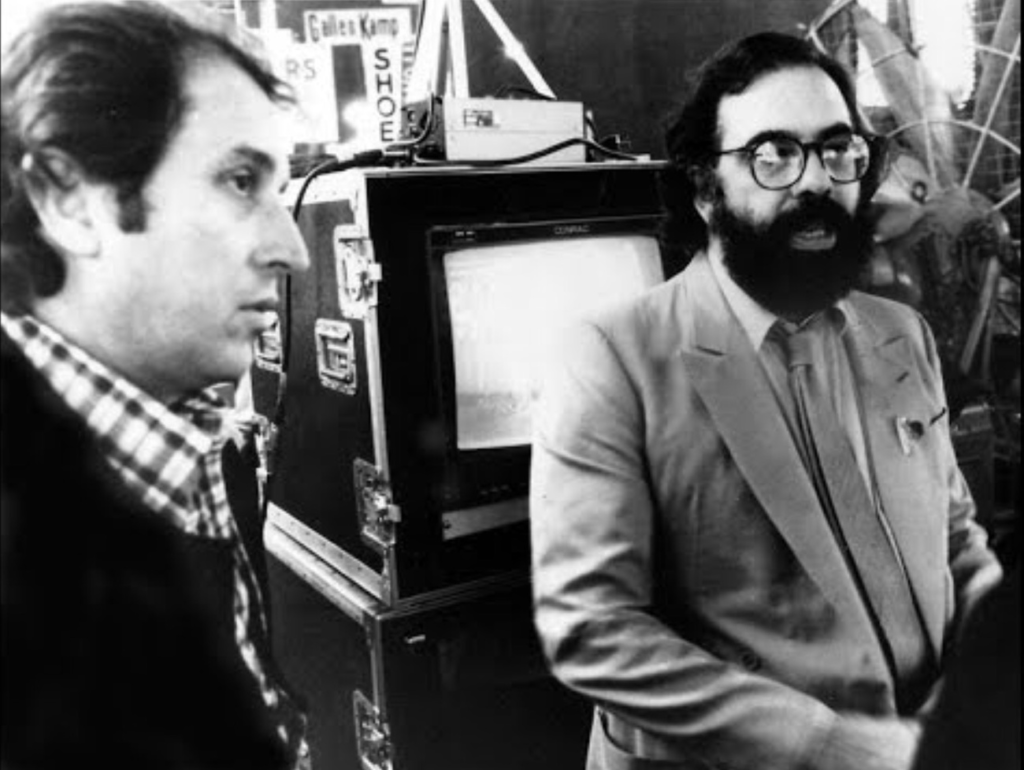
Vittorio Storaro is one of Italy’s best cinematographers who has been active since the 1960s. He is known for his philosophical approach to cinematography and his expressive use of color.
Storaro is famous for his use of color as a narrative and emotional tool. He often employs bold, vibrant color palettes and dramatic lighting to create visually striking images that enhance the story’s themes.
Storaro has had long-standing collaborations with directors Bernardo Bertolucci (“The Conformist,” “The Last Emperor”) and Francis Ford Coppola (“Apocalypse Now,” “One from the Heart”). He also worked with Warren Beatty on “Reds” and “Dick Tracy.”
Storaro developed the Univision 65 film system, which aimed to bridge the gap between theatrical and television aspect ratios. He also pioneered the use of color psychology in cinematography, developing theories about the emotional impact of different colors.
Storaro has won three Academy Awards for Best Cinematography for “Apocalypse Now” (1979), “Reds” (1981), and “The Last Emperor” (1987). He has also received numerous other accolades, including a Lifetime Achievement Award from the American Society of Cinematographers.
4. Gordon Willis: The Prince of Darkness
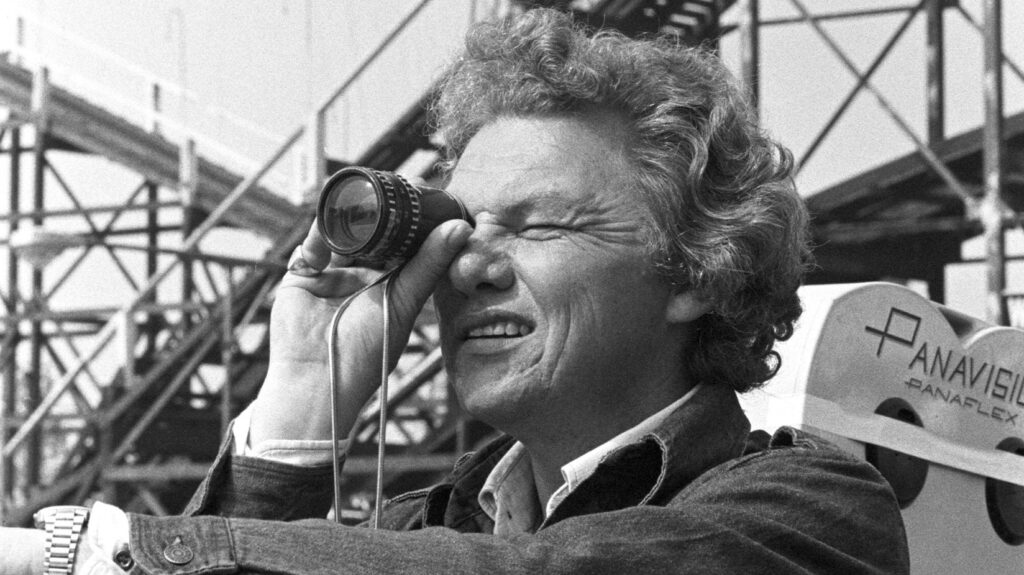
Gordon Willis was an American cinematographer active from the 1970s to the 1990s. Nicknamed “The Prince of Darkness,” he was known for his bold use of shadow and unconventional lighting techniques.
Willis was famous for his low-key lighting style, often leaving large portions of the frame in shadow. He used warm color palettes and precise composition to create moody, atmospheric visuals.
Willis is best known for his work on Francis Ford Coppola’s “The Godfather” trilogy. He also had a long-standing collaboration with Woody Allen, working on films like “Annie Hall,” “Manhattan,” and “Zelig.”
Willis pioneered the use of top-lighting and created the distinctive warm, amber glow seen in “The Godfather.” He also developed innovative techniques for period lighting, as seen in his work on “The Godfather Part II” and “All the President’s Men.”
Despite his significant influence, Willis was often overlooked by the Academy, receiving only two Oscar nominations in his career. He was finally awarded an Honorary Oscar in 2009 for his lifetime of achievement in film.
5. Sven Nykvist: Bergman’s Eye
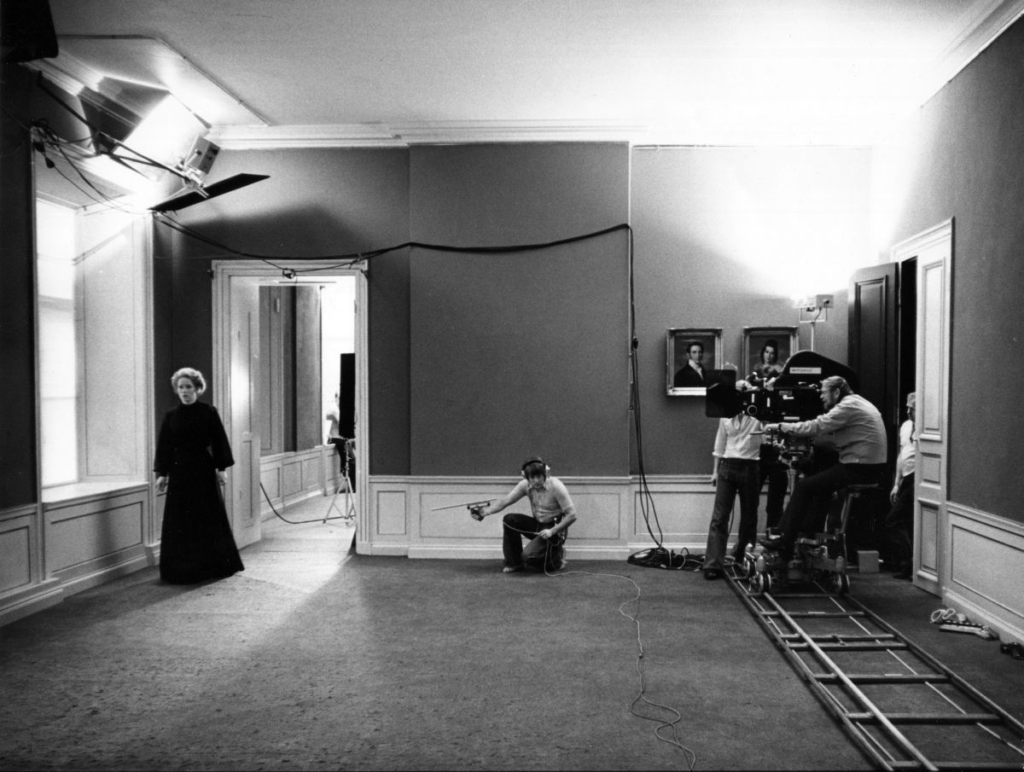
Sven Nykvist is one of Sweden’s best cinematographers active from the 1940s to the 1990s. He was known for his naturalistic style and masterful use of light.
Nykvist was renowned for his subtle, naturalistic lighting techniques. He often used soft, diffused light and preferred working with available light sources. His style emphasized simplicity and emotional truth.
Nykvist is best known for his long collaboration with director Ingmar Bergman, working on films like “Persona,” “Cries and Whispers,” and “Fanny and Alexander.” He also worked with other notable directors such as Woody Allen (“Another Woman,” “Crimes and Misdemeanors”) and Roman Polanski (“The Tenant”).
Nykvist pioneered the use of extremely soft lighting in cinema, developing techniques to create what Bergman called “the soft light without shadows.” He was also one of the first cinematographers to extensively use bounce lighting.
Nykvist won two Academy Awards for Best Cinematography for Bergman’s films “Cries and Whispers” (1973) and “Fanny and Alexander” (1983). He also received the American Society of Cinematographers’ International Award in 1996.
6. Robert Richardson: Tarantino’s Visual Storyteller

Robert Richardson is an American cinematographer who has been active since the 1980s. He is known for his bold visual style and ability to adapt to different directors’ visions.
Richardson is known for his high-contrast lighting, use of strong backlight, and willingness to push film stocks to their limits. He often employs dynamic camera movements and dramatic shifts in exposure within a single shot.
Richardson has long-standing collaborations with directors Martin Scorsese (“Casino,” “The Aviator,” “Hugo”) and Quentin Tarantino (“Kill Bill,” “Inglourious Basterds,” “Once Upon a Time in Hollywood”). He has also worked extensively with Oliver Stone (“Platoon,” “JFK,” “Natural Born Killers”).
Richardson is known for his innovative use of multiple film stocks within a single film to create different moods and textures. He has also been at the forefront of adopting new technologies, including being one of the first major cinematographers to use digital intermediate processes.
Richardson has won three Academy Awards for Best Cinematography for “JFK” (1991), “The Aviator” (2004), and “Hugo” (2011). He has received a total of nine Oscar nominations and has won three BAFTA Awards for his work.
7. Gregg Toland: Early Pioneer in Cinematography

Gregg Toland was an American cinematographer active from the 1920s to the 1940s. He is considered one of the most influential cinematographers in the history of film.
Toland was known for his deep focus photography, which kept foreground, middle-ground, and background all in sharp focus simultaneously. He also frequently used low-angle shots and ceilings in his compositions.
Toland is best known for his work on Orson Welles’ “Citizen Kane” (1941). He also collaborated with directors John Ford (“The Grapes of Wrath,” “The Long Voyage Home”) and William Wyler (“Wuthering Heights,” “The Best Years of Our Lives”).
Toland pioneered the use of deep focus cinematography, developing new lighting techniques and using faster film stocks and coated lenses to achieve greater depth of field. He also innovated in the use of low-angle shots and was one of the first to use ceilings in set designs.
Toland won an Academy Award for Best Cinematography for “Wuthering Heights” (1939). Despite the revolutionary nature of his work on “Citizen Kane,” he did not win for that film. In 1973, he was posthumously awarded the ASC International Award in recognition of his enduring influence on cinematography.
8. Conrad Hall: Master of Shadows

Conrad L. Hall was an American cinematographer active from the 1960s to the early 2000s. He was known for his poetic visual style and willingness to experiment with unconventional techniques.
Hall was renowned for his expressive use of light and shadow, often employing naturalistic lighting and allowing “happy accidents” to inform his work. He was skilled at creating moody, atmospheric visuals that enhanced the emotional content of a scene.
Hall worked on a wide range of films, including “Butch Cassidy and the Sundance Kid,” “American Beauty,” and “Road to Perdition.” He had notable collaborations with directors Sam Mendes and Richard Brooks.
Hall was known for his innovative lighting techniques, including the use of reflected and bounced light to create subtle, naturalistic effects. He was also one of the first cinematographers to extensively use ENR silver retention process to manipulate contrast and color saturation.
Hall won three Academy Awards for Best Cinematography for “Butch Cassidy and the Sundance Kid” (1969), “American Beauty” (1999), and posthumously for “Road to Perdition” (2002). He received a total of 10 Oscar nominations throughout his career.
9. Christopher Doyle: Wong Kar-wai’s Colorful Eye

Christopher Doyle is an Australian-born Hong Kong-based cinematographer who has been active since the 1980s. He is known for his vibrant visual style and significant contributions to Asian cinema.
Doyle is famous for his use of bold colors, unconventional framing, and kinetic camera movements. His style often involves handheld camerawork and creative use of wide-angle lenses to create dynamic, immersive visuals.
Doyle is best known for his long-standing collaboration with Hong Kong director Wong Kar-wai, working on films like “Chungking Express,” “In the Mood for Love,” and “2046.” He has also worked with other notable directors such as Gus Van Sant (“Psycho,” “Paranoid Park”) and Zhang Yimou (“Hero”).
Doyle is known for his innovative use of color and light to create mood and atmosphere. He often pushes the boundaries of traditional cinematography, experimenting with different film stocks, lenses, and camera techniques to achieve unique visual effects.
While Doyle has never been nominated for an Academy Award, he has received numerous other accolades. These include the Technical Grand Prize at the Cannes Film Festival for “In the Mood for Love” (2000), and three Hong Kong Film Awards for Best Cinematography.
10. Jack Cardiff: Technicolor Wizard
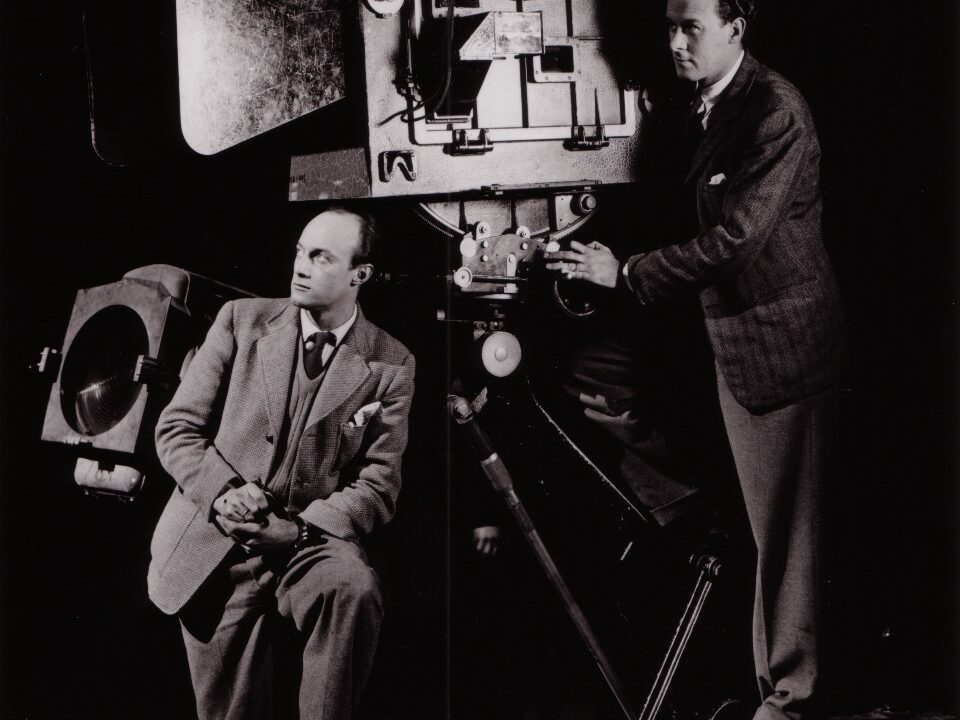
Jack Cardiff was a British cinematographer and director active from the 1930s to the 1990s. He was one of the first to master Technicolor and was known as the “Master of Technicolor.”
Cardiff was renowned for his painterly approach to cinematography, often drawing inspiration from classic artworks. He was a master of Technicolor, using bold, vibrant colors and dramatic lighting to create visually stunning images.
Cardiff is best known for his work with directors Michael Powell and Emeric Pressburger, particularly on films like “A Matter of Life and Death,” “Black Narcissus,” and “The Red Shoes.” He also worked on notable films such as “The African Queen” directed by John Huston.
Cardiff was a pioneer in the use of Technicolor, developing innovative techniques to control and manipulate color on film. He was also known for his creative use of filters and lighting to achieve specific visual effects.
Cardiff won an Academy Award for Best Cinematography for “Black Narcissus” (1947) and received two other nominations. In 2001, he was awarded an Honorary Oscar for his exceptional contributions to the art of cinematography. He was also the first cinematographer to receive an honorary membership in the British Society of Cinematographers.
11. Freddie Young: Epic Landscapes Master
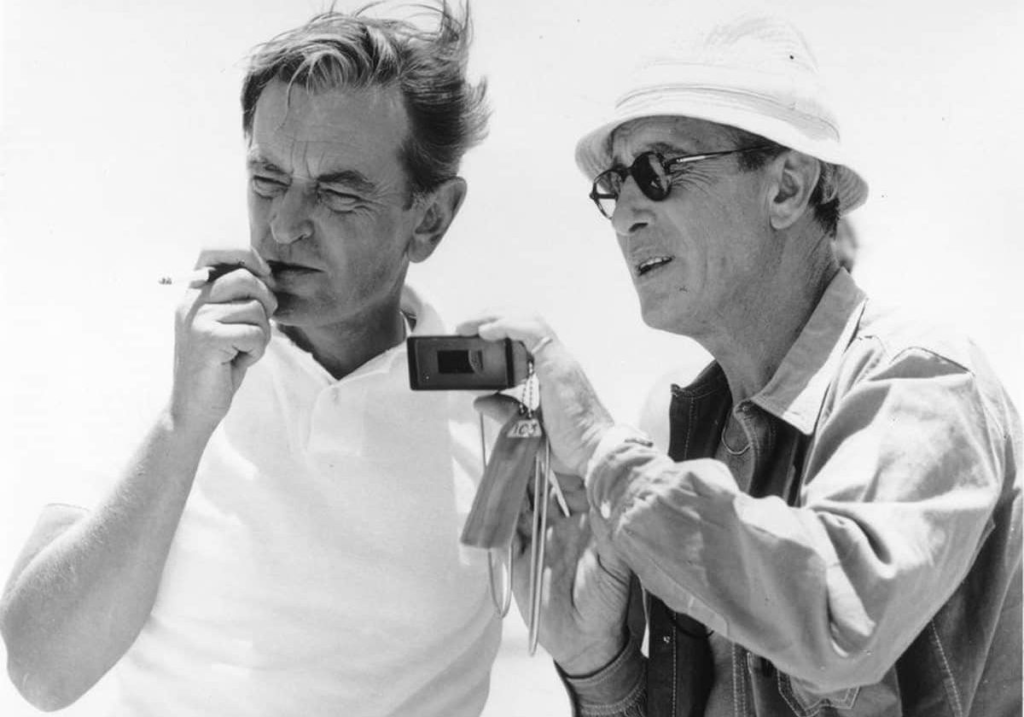
Freddie Young, a British cinematographer, was renowned for his mastery of epic landscapes and period films. His career spanned from the 1920s to the 1980s, making him one of the most enduring figures in cinematography. Young’s work was characterized by his ability to capture vast, sweeping vistas and intimate character moments with equal skill.
Young’s signature style involved using wide-angle lenses and deep focus to showcase expansive landscapes while maintaining detail throughout the frame. He was also known for his meticulous lighting techniques, which brought depth and dimensionality to both exterior and interior scenes. His use of color in epic films set new standards for the industry.
Young’s most notable collaborations were with director David Lean, resulting in the visually stunning films “Lawrence of Arabia,” “Doctor Zhivago,” and “Ryan’s Daughter.” These films showcased Young’s ability to capture the grandeur of diverse landscapes, from the deserts of Arabia to the snowy expanses of Russia.
One of Young’s significant contributions was his work in developing the use of 65mm film for epic productions. This larger film format allowed for greater detail and visual impact, particularly in landscape shots. He was also one of the first British cinematographers to work with CinemaScope, adapting his style to the wider frame.
Freddie Young won three Academy Awards for Best Cinematography, all for his collaborations with David Lean: “Lawrence of Arabia” (1962), “Doctor Zhivago” (1965), and “Ryan’s Daughter” (1970). He was also awarded the British Film Institute Fellowship in 1993, recognizing his lifetime contribution to British cinema.
12. Vilmos Zsigmond: New Hollywood Visionary
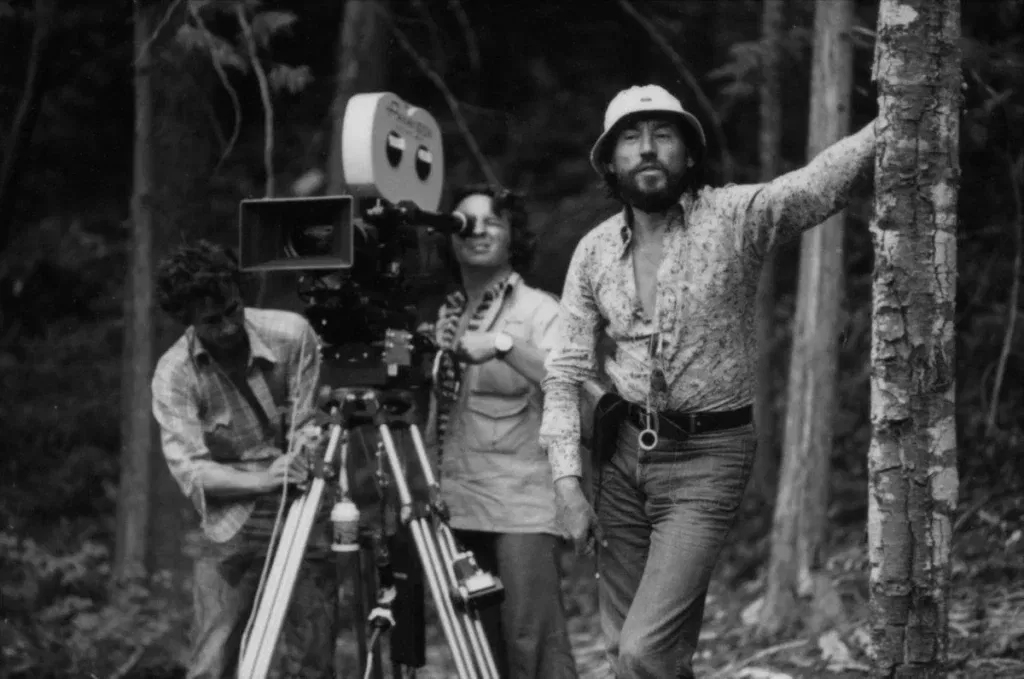
Vilmos Zsigmond, a Hungarian-American cinematographer, was a key figure in the New Hollywood movement of the 1970s. His career in American cinema began in the 1960s and continued into the 21st century, bringing a European sensibility to Hollywood filmmaking. Zsigmond’s work was characterized by its naturalistic approach and innovative use of lighting.
Zsigmond’s signature style involved a preference for natural and available light, often pushing film stocks to their limits to capture low-light situations. He was known for his use of subtle, diffused lighting and a muted color palette that gave his films a distinctive, often melancholic atmosphere. His camera work often employed handheld shots and zoom lenses to create a sense of immediacy and realism.
Some of Zsigmond’s most notable collaborations were with directors Robert Altman (“McCabe & Mrs. Miller,” “The Long Goodbye”) and Brian De Palma (“Blow Out,” “The Black Dahlia”). His work on Steven Spielberg’s “Close Encounters of the Third Kind” is particularly renowned for its innovative use of lighting to create a sense of wonder and otherworldliness.
Zsigmond was known for his technique of pre-flashing film negative to reduce contrast and create a specific period look, most famously used in “McCabe & Mrs. Miller.” He was also an early adopter of the Steadicam, using it to great effect in films like “The Deer Hunter.”
Vilmos Zsigmond won the Academy Award for Best Cinematography for “Close Encounters of the Third Kind” (1977) and received nominations for “The Deer Hunter” (1978), “The River” (1984), and “The Black Dahlia” (2006). He was also awarded the Lifetime Achievement Award by the American Society of Cinematographers in 1999.
13. Darius Khondji: Mood and Atmosphere Specialist

Darius Khondji, a French-Iranian cinematographer, has been a prominent figure in both Hollywood and European cinema since the 1990s. Known for his ability to create distinctive moods and atmospheres, Khondji’s work spans a wide range of genres and styles, from dark thrillers to whimsical comedies.
Khondji’s signature style is characterized by his innovative use of lighting and color. He often employs high-contrast lighting, with deep shadows and carefully placed highlights to create a sense of depth and mystery. His color palettes are frequently muted or monochromatic, with occasional bursts of vivid color for emotional effect. Khondji is also known for his use of wide-angle lenses and moving cameras to create dynamic, immersive visuals.
Notable collaborations include his work with David Fincher on “Se7en,” Jean-Pierre Jeunet on “Delicatessen” and “The City of Lost Children,” and Woody Allen on several films including “Midnight in Paris” and “Irrational Man.” His versatility is evident in the range of directors and genres he has worked with, from the gritty realism of Michael Haneke’s “Amour” to the stylized world of Bong Joon-ho’s “Okja.”
Khondji is known for his innovative lighting techniques, often using unconventional light sources and placements to create unique atmospheres. He has also been at the forefront of digital cinematography, seamlessly blending his film-based techniques with new technology.
While Darius Khondji has not won an Academy Award, he has been nominated for “Evita” (1996). He has received numerous other accolades, including César Award nominations and recognition at various international film festivals. His work is widely respected in the industry for its distinctive visual style and technical innovation.
14. Robert Elswit: Versatile Visual Storyteller

Robert Elswit is an American cinematographer whose career has spanned several decades, working across various genres and styles. Known for his versatility and ability to adapt his visual approach to suit different directors and stories, Elswit has been a prominent figure in American cinema since the 1980s.
Elswit’s cinematography style is characterized by its naturalistic approach, often employing practical lighting and handheld camera work to create a sense of realism. However, he’s equally adept at creating stylized, visually striking images when the story calls for it. His use of color is often subtle but effective, and he’s known for his skill in capturing urban landscapes and intimate character moments alike.
Some of Elswit’s most notable collaborations have been with director Paul Thomas Anderson, including “Boogie Nights,” “Magnolia,” and “There Will Be Blood.” He has also worked extensively with George Clooney on films like “Good Night, and Good Luck” and “Michael Clayton,” and with Dan Gilroy on “Nightcrawler” and “Roman J. Israel, Esq.”
Elswit is known for his innovative use of camera movement and framing to enhance storytelling. In “There Will Be Blood,” for example, he used wide-angle lenses and expansive compositions to emphasize the film’s themes of ambition and isolation. He’s also been at the forefront of integrating digital technology with traditional film techniques.
Robert Elswit won the Academy Award for Best Cinematography for “There Will Be Blood” (2007) and was nominated for “Good Night, and Good Luck” (2005). He has also received multiple nominations from the American Society of Cinematographers and has won several critics’ awards for his work.
15. Greig Fraser: Innovator in Digital Cinematography
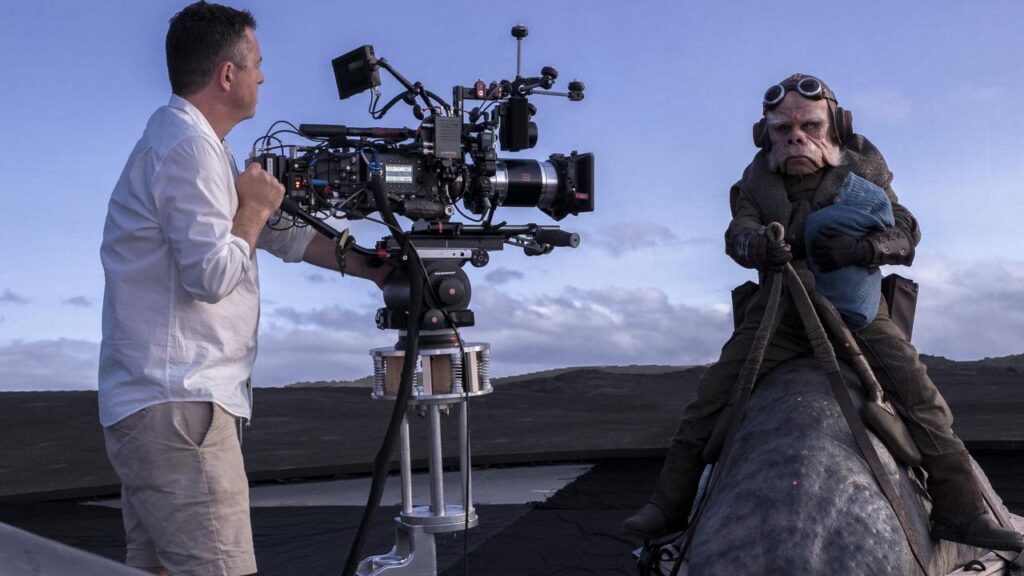
Greig Fraser is one of the best Australian cinematographers working today, becoming one of the most sought-after DPs in Hollywood since the 2010s. Known for his naturalistic lighting and innovative use of the LED stage to create immersive visual worlds, Fraser has worked on both intimate dramas and large-scale blockbusters.
Fraser’s style is characterized by his naturalistic approach to lighting, often using practical light sources to create a sense of realism. He’s known for his skill in low-light cinematography and his ability to create rich, detailed images in challenging lighting conditions. Fraser also has a distinctive approach to color, often using muted palettes punctuated by bold accent colors.
Notable collaborations include his work with Garth Davis on “Lion,” Matt Reeves on “Let Me In” and “The Batman,” and Denis Villeneuve on “Dune.” He has also worked on major franchise films like “Rogue One: A Star Wars Story” and “Zero Dark Thirty.”
Fraser has been at the forefront of digital cinematography, pushing the boundaries of what’s possible with digital cameras. For “Dune,” he developed innovative techniques for capturing the film’s expansive desert landscapes and intricate interiors, blending practical effects with cutting-edge digital technology.
Greig Fraser won the Academy Award for Best Cinematography for “Dune” (2021) and was nominated for “Lion” (2016). He has also received numerous other accolades, including an Emmy Award for his work on “The Mandalorian” and recognition from the American Society of Cinematographers.
16. James Wong Howe: From Silents to New Hollywood

James Wong Howe was a Chinese-American cinematographer whose career spanned from the silent era to the 1970s. He was a pioneer in the field, known for his innovative techniques and his ability to overcome the technical limitations of early film technology.
Howe’s style was characterized by his masterful use of shadow and light, earning him the nickname “Low-key Howe.” He was known for his deep focus photography, use of wide-angle lenses, and creative solutions to lighting challenges. Howe was also one of the first cinematographers to extensively use hand-held cameras for a more dynamic, immediate feel.
Some of Howe’s most notable films include “The Thin Man,” “Body and Soul,” “Picnic,” and “Hud.” He worked with many of the great directors of Hollywood’s Golden Age, including William K. Howard, W.S. Van Dyke, and Martin Ritt.
Howe made numerous technical innovations throughout his career. He was one of the first to use deep-focus cinematography and developed techniques for shooting day-for-night scenes. He also invented the crab dolly, a camera mount that allows for smooth, multi-directional movement.
James Wong Howe won two Academy Awards for Best Cinematography, for “The Rose Tattoo” (1955) and “Hud” (1963). He received a total of ten Oscar nominations throughout his career. In 2003, he was named one of the ten most influential cinematographers in film history by the International Cinematographers Guild.
17. Haskell Wexler: Documentary-Inspired Realism
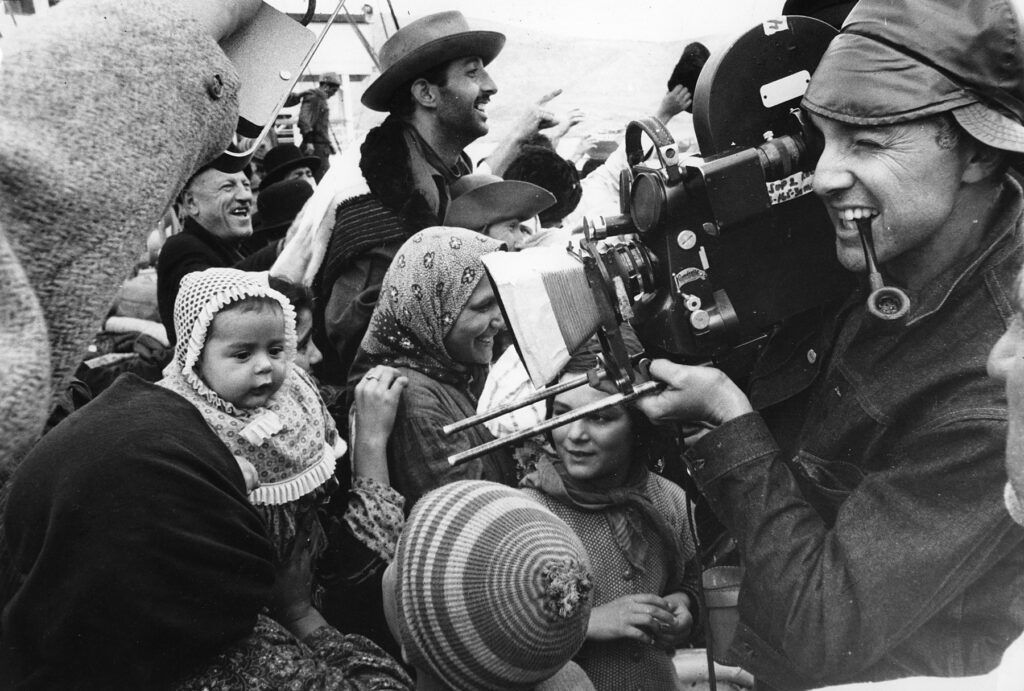
Haskell Wexler was an American cinematographer and filmmaker whose career spanned six decades. Known for his politically engaged work and his ability to bring a documentary-like realism to fiction films, Wexler was a key figure in the New Hollywood movement of the 1960s and 70s.
Wexler’s style was characterized by its naturalistic approach, often employing handheld cameras and available light to create a sense of immediacy and authenticity. He was known for his ability to capture the gritty realism of urban environments as well as the expansive beauty of natural landscapes.
Some of Wexler’s most notable works include “Who’s Afraid of Virginia Woolf?”, “In the Heat of the Night,” “One Flew Over the Cuckoo’s Nest,” and “Bound for Glory.” He also directed several films, including the groundbreaking hybrid of fiction and documentary, “Medium Cool.”
Wexler was a pioneer in blending documentary techniques with fictional storytelling. He was also one of the first cinematographers to extensively use the Steadicam, employing it to great effect in “Bound for Glory.” Wexler was also known for his commitment to social issues, often using his craft to highlight political and social injustices.
Haskell Wexler won two Academy Awards for Best Cinematography, for “Who’s Afraid of Virginia Woolf?” (1966) and “Bound for Glory” (1976). He received three other Oscar nominations and was awarded a Lifetime Achievement Award by the American Society of Cinematographers in 1993.
18. Nestor Almendros: Natural Light Maestro
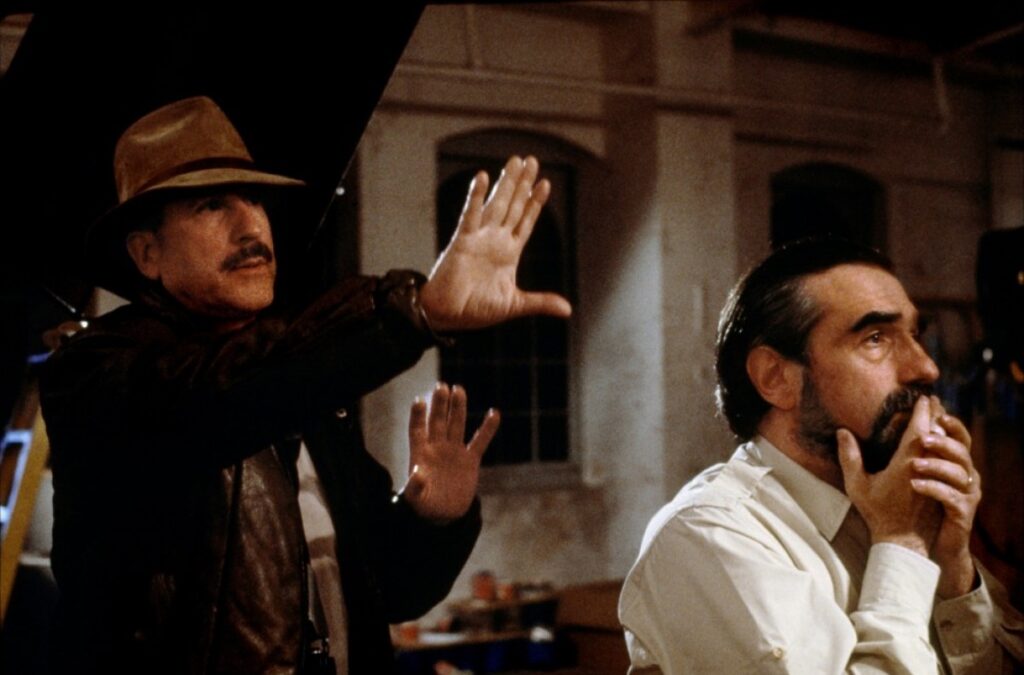
Nestor Almendros was a Spanish-Cuban cinematographer known for his naturalistic style and masterful use of available light. Active from the 1960s to the 1990s, Almendros worked in both European and American cinema, bringing a distinctive visual sensibility to his collaborations with various directors.
Almendros’ signature style was characterized by his preference for natural light and minimal artificial lighting. He often pushed film stocks to their limits to capture the subtle nuances of twilight, a time he called “the magic hour.” His compositions were often simple yet evocative, focusing on the interplay of light and shadow.
Notable collaborations include his work with François Truffaut on films like “The Wild Child” and “The Story of Adele H.,” with Eric Rohmer on “Claire’s Knee” and “Pauline at the Beach,” and with Terrence Malick on “Days of Heaven.” He also worked with Robert Benton on “Kramer vs. Kramer” and “Places in the Heart.”
Almendros was known for his innovative approaches to lighting, often using reflectors and available light sources in unconventional ways. His work on “Days of Heaven” is particularly renowned for its extensive use of natural light and “magic hour” shooting, which required precise timing and pushed the limits of the film stock.
Nestor Almendros won the Academy Award for Best Cinematography for “Days of Heaven” (1978) and received three other Oscar nominations. He was also recognized with numerous awards from international film festivals and cinematography societies.
19. Caleb Deschanel: Master of Movement

Caleb Deschanel is an American cinematographer whose career has spanned over five decades. Known for his lyrical visual style and his ability to capture both sweeping landscapes and intimate character moments, Deschanel has been a significant figure in American cinema since the 1970s.
Deschanel’s cinematography is characterized by its painterly quality, with a keen eye for composition and natural light. He often employs long takes and fluid camera movements to create a sense of immersion. His use of color is subtle yet evocative, often drawing inspiration from classical paintings.
Notable films in Deschanel’s career include “The Black Stallion,” “The Right Stuff,” “The Natural,” and “The Passion of the Christ.” He has collaborated multiple times with directors like Carroll Ballard, Barry Levinson, and Mel Gibson.
One of Deschanel’s unique contributions is his ability to create visually stunning sequences that seamlessly blend practical effects with naturalistic cinematography. His work on “The Right Stuff” is particularly notable for its innovative approach to filming aerial sequences.
Caleb Deschanel has been nominated for the Academy Award for Best Cinematography six times, for films including “The Right Stuff,” “The Natural,” “Fly Away Home,” “The Patriot,” “The Passion of the Christ,” and “Never Look Away.” While he hasn’t won an Oscar, he has received numerous other accolades, including the American Society of Cinematographers Lifetime Achievement Award in 2010.
20. Matthew Libatique: Dynamic Visual Collaborator

Matthew Libatique is an American cinematographer of Filipino descent who has been active since the 1990s. Known for his dynamic visual style and close collaborations with visionary directors, Libatique has become one of the most sought-after cinematographers in contemporary Hollywood.
Libatique’s style is characterized by its energy and immediacy, often employing handheld cameras and unconventional angles to create a sense of intimacy and urgency. He’s known for his bold use of color and contrast, and his ability to create distinct visual atmospheres for each project.
Some of Libatique’s most notable collaborations have been with director Darren Aronofsky, including “Pi,” “Requiem for a Dream,” “The Fountain,” and “Black Swan.” He has also worked extensively with Spike Lee on films like “She Hate Me” and “Inside Man,” and with Bradley Cooper on “A Star Is Born.”
Libatique is known for his innovative approaches to creating unique visual styles for each film. For “Requiem for a Dream,” he developed a distinctive bleach bypass look that enhanced the film’s gritty, hallucinatory aesthetic. In “Black Swan,” he used handheld 16mm cameras to create an intimate, documentary-like feel that contrasted with the film’s more stylized elements.
Matthew Libatique has received two Academy Award nominations for Best Cinematography, for “Black Swan” (2010) and “A Star Is Born” (2018). He has also been recognized by the American Society of Cinematographers and has won numerous critics’ awards for his work.
Conclusion
As we look to the future of cinematography, it’s clear that mastering both traditional techniques and cutting-edge technology is crucial. Aspiring cinematographers should strive to understand the fundamental principles of light, composition, and movement that have remained constant throughout cinema history, while also embracing new tools like digital cameras, LED lighting, and virtual production techniques. The most successful cinematographers of tomorrow will be those who can seamlessly blend classic visual storytelling with innovative technical approaches, creating images that are both beautiful and meaningful.
By appreciating the artistry of cinematography, we not only honor the work of these visual masters but also deepen our understanding and enjoyment of the cinematic art form. The future of cinema will be shaped by those who can see the world through a cinematographer’s eye, finding new ways to capture the beauty, complexity, and emotion of the human experience on screen.
Academy Awards for Best Cinematography (1927 – 2024)
- 1927/28 – Sunrise: A Song of Two Humans, Charles Rosher and Karl Struss
- 1928/29 – White Shadows in the South Seas, Clyde De Vinna
- 1929/30 – With Byrd at the South Pole, Joseph T. Rucker and Willard Van der Veer
- 1930/31 – Tabu: A Story of the South Seas, Floyd Crosby
- 1931/32 – Shanghai Express, Lee Garmes
- 1932/33 – A Farewell to Arms, Charles Lang
- 1934 – Cleopatra, Victor Milner
- 1935 – A Midsummer Night’s Dream, Hal Mohr
- 1936 – Anthony Adverse, Tony Gaudio
- 1937 – The Good Earth, Karl Freund
- 1938 – The Great Waltz, Joseph Ruttenberg
- 1939 – Gone with the Wind, Ernest Haller and Ray Rennahan
- 1940 – Rebecca, George Barnes
- 1941 – How Green Was My Valley, Arthur C. Miller
- 1942 – Mrs. Miniver, Joseph Ruttenberg
- 1943 – The Song of Bernadette, Arthur C. Miller
- 1944 – Laura, Joseph LaShelle
- 1945 – Leave Her to Heaven, Leon Shamroy
- 1946 – Anna and the King of Siam, Arthur C. Miller
- 1947 – Great Expectations, Guy Green
- 1948 – The Naked City, William Daniels
- 1949 – Battleground, Paul C. Vogel
- 1950 – The Third Man, Robert Krasker
- 1951 – An American in Paris, Alfred Gilks and John Alton
- 1952 – The Bad and the Beautiful, Robert Surtees
- 1953 – From Here to Eternity, Burnett Guffey
- 1954 – On the Waterfront, Boris Kaufman
- 1955 – To Catch a Thief, Robert Burks
- 1956 – Somebody Up There Likes Me, Joseph Ruttenberg
- 1957 – The Bridge on the River Kwai, Jack Hildyard
- 1958 – Gigi, Joseph Ruttenberg
- 1959 – Ben-Hur, Robert Surtees
- 1960 – Sons and Lovers, Freddie Francis
- 1961 – West Side Story, Daniel L. Fapp
- 1962 – Lawrence of Arabia, Freddie Young
- 1963 – Cleopatra, Leon Shamroy
- 1964 – My Fair Lady, Harry Stradling
- 1965 – Doctor Zhivago, Freddie Young
- 1966 – Who’s Afraid of Virginia Woolf?, Haskell Wexler
- 1967 – Bonnie and Clyde, Burnett Guffey
- 1968 – Romeo and Juliet, Pasqualino De Santis
- 1969 – Butch Cassidy and the Sundance Kid, Conrad L. Hall
- 1970 – Ryan’s Daughter, Freddie Young
- 1971 – Fiddler on the Roof, Oswald Morris
- 1972 – Cabaret, Geoffrey Unsworth
- 1973 – Cries and Whispers, Sven Nykvist
- 1974 – The Towering Inferno, Fred J. Koenekamp and Joseph Biroc
- 1975 – Barry Lyndon, John Alcott
- 1976 – Bound for Glory, Haskell Wexler
- 1977 – Close Encounters of the Third Kind, Vilmos Zsigmond
- 1978 – Days of Heaven, Néstor Almendros
- 1979 – Apocalypse Now, Vittorio Storaro
- 1980 – Tess, Geoffrey Unsworth and Ghislain Cloquet
- 1981 – Reds, Vittorio Storaro
- 1982 – Gandhi, Billy Williams and Ronnie Taylor
- 1983 – Fanny and Alexander, Sven Nykvist
- 1984 – The Killing Fields, Chris Menges
- 1985 – Out of Africa, David Watkin
- 1986 – The Mission, Chris Menges
- 1987 – The Last Emperor, Vittorio Storaro
- 1988 – Mississippi Burning, Peter Biziou
- 1989 – Glory, Freddie Francis
- 1990 – Dances with Wolves, Dean Semler
- 1991 – JFK, Robert Richardson
- 1992 – A River Runs Through It, Philippe Rousselot
- 1993 – Schindler’s List, Janusz Kamiński
- 1994 – Legends of the Fall, John Toll
- 1995 – Braveheart, John Toll
- 1996 – The English Patient, John Seale
- 1997 – Titanic, Russell Carpenter
- 1998 – Saving Private Ryan, Janusz Kamiński
- 1999 – American Beauty, Conrad L. Hall
- 2000 – Crouching Tiger, Hidden Dragon, Peter Pau
- 2001 – The Lord of the Rings: The Fellowship of the Ring, Andrew Lesnie
- 2002 – Road to Perdition, Conrad L. Hall
- 2003 – Master and Commander: The Far Side of the World, Russell Boyd
- 2004 – The Aviator, Robert Richardson
- 2005 – Memoirs of a Geisha, Dion Beebe
- 2006 – Pan’s Labyrinth, Guillermo Navarro
- 2007 – There Will Be Blood, Robert Elswit
- 2008 – Slumdog Millionaire, Anthony Dod Mantle
- 2009 – Avatar, Mauro Fiore
- 2010 – Inception, Wally Pfister
- 2011 – Hugo, Robert Richardson
- 2012 – Life of Pi, Claudio Miranda
- 2013 – Gravity, Emmanuel Lubezki
- 2014 – Birdman or (The Unexpected Virtue of Ignorance), Emmanuel Lubezki
- 2015 – The Revenant, Emmanuel Lubezki
- 2016 – La La Land, Linus Sandgren
- 2017 – Blade Runner 2049, Roger Deakins
- 2018 – Roma, Alfonso Cuarón
- 2019 – 1917, Roger Deakins
- 2020 – Mank, Erik Messerschmidt
- 2021 – Dune, Greig Fraser
- 2022 – All Quiet on the Western Front, James Friend
- 2023 – Oppenheimer, Hoyte van Hoytema
- 2024 – Oscar ceremony hasn’t taken place yet
Who are considered the top 10 best cinematographers of all time?
While opinions may vary, some frequently mentioned names include Roger Deakins, Emmanuel Lubezki, Vittorio Storaro, Gordon Willis, Sven Nykvist, Robert Richardson, Gregg Toland, Conrad L. Hall, Christopher Doyle, and Jack Cardiff. However, this list is subjective and may change depending on personal preferences and critical evaluations.
What does a Director of Photography do in the film industry?
A Director of Photography (DP) or cinematographer is responsible for the visual look of a film. They work closely with the director to determine the visual style of the movie, including lighting, camera movement, and framing. The DP also leads the camera and lighting departments, making technical decisions about equipment and techniques to achieve the desired visual aesthetic.
How has the Academy Award for Best Cinematography evolved over time?
The Academy Award for Best Cinematography has been presented since the first Academy Awards ceremony in 1929. Initially, the award was split into two categories: black-and-white and color cinematography. These categories were merged in 1967. Over time, the award has reflected changes in film technology, with recent years seeing more recognition for digital cinematography alongside traditional film.
What are some key differences between film and digital cinematography?
Film and digital cinematography differ in several ways. Film offers a unique organic look with grain and color characteristics that some cinematographers prefer. Digital cinematography provides immediate playback, more flexibility in low-light situations, and easier manipulation in post-production. Digital has also made some techniques, like extremely long takes, more feasible. However, both mediums require skill and artistry to use effectively, and many top cinematographers work with both depending on the needs of each project.